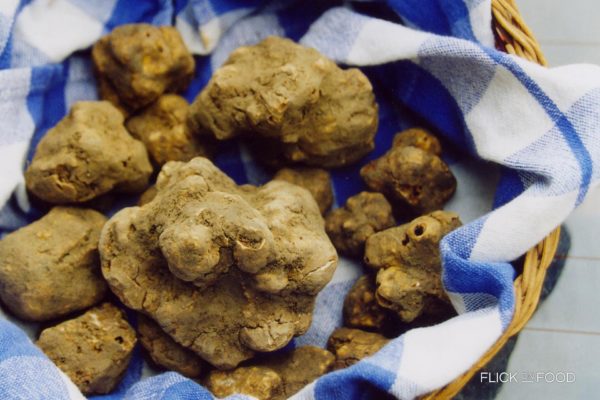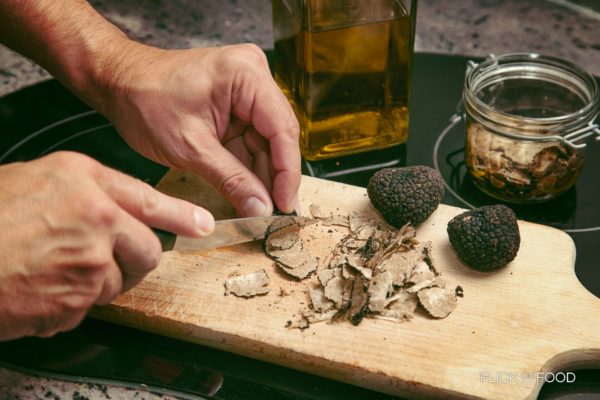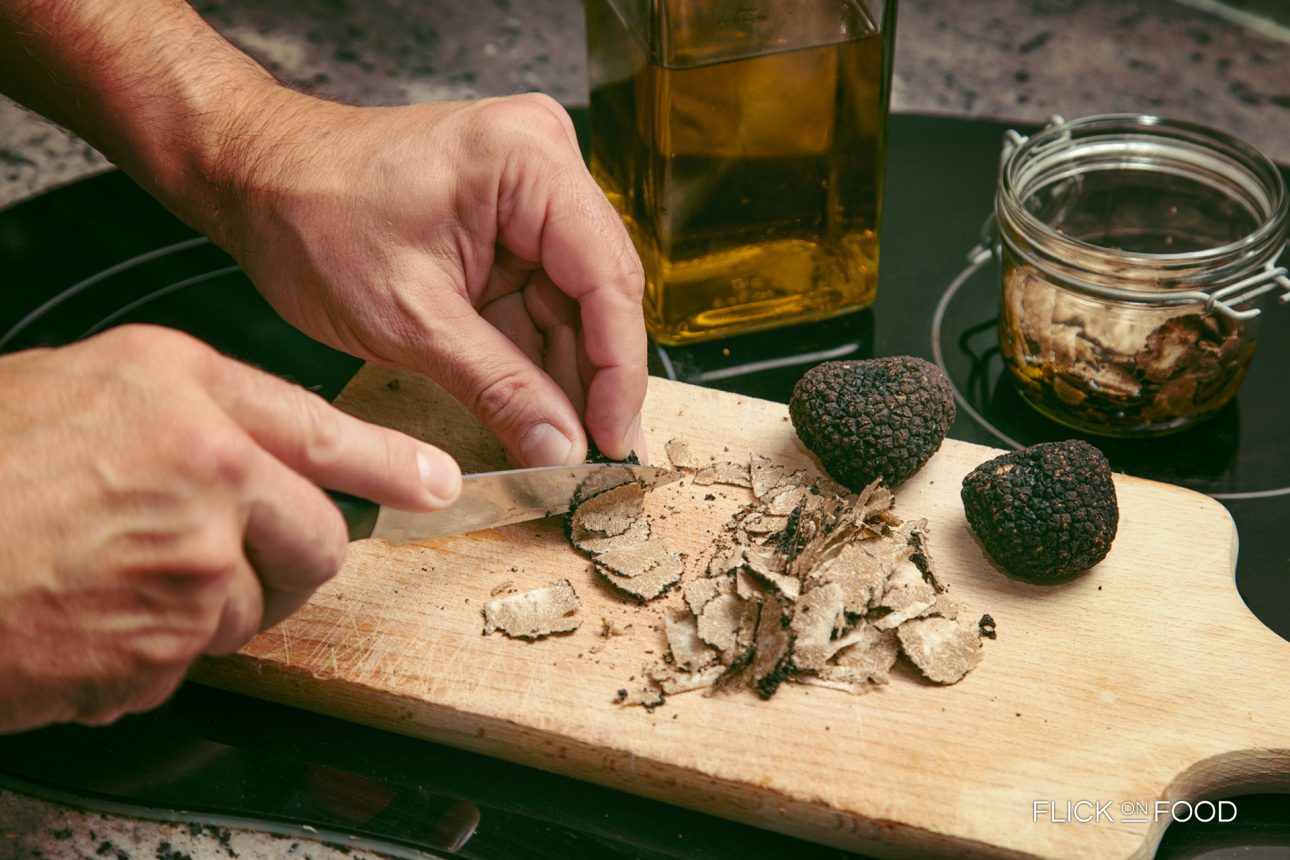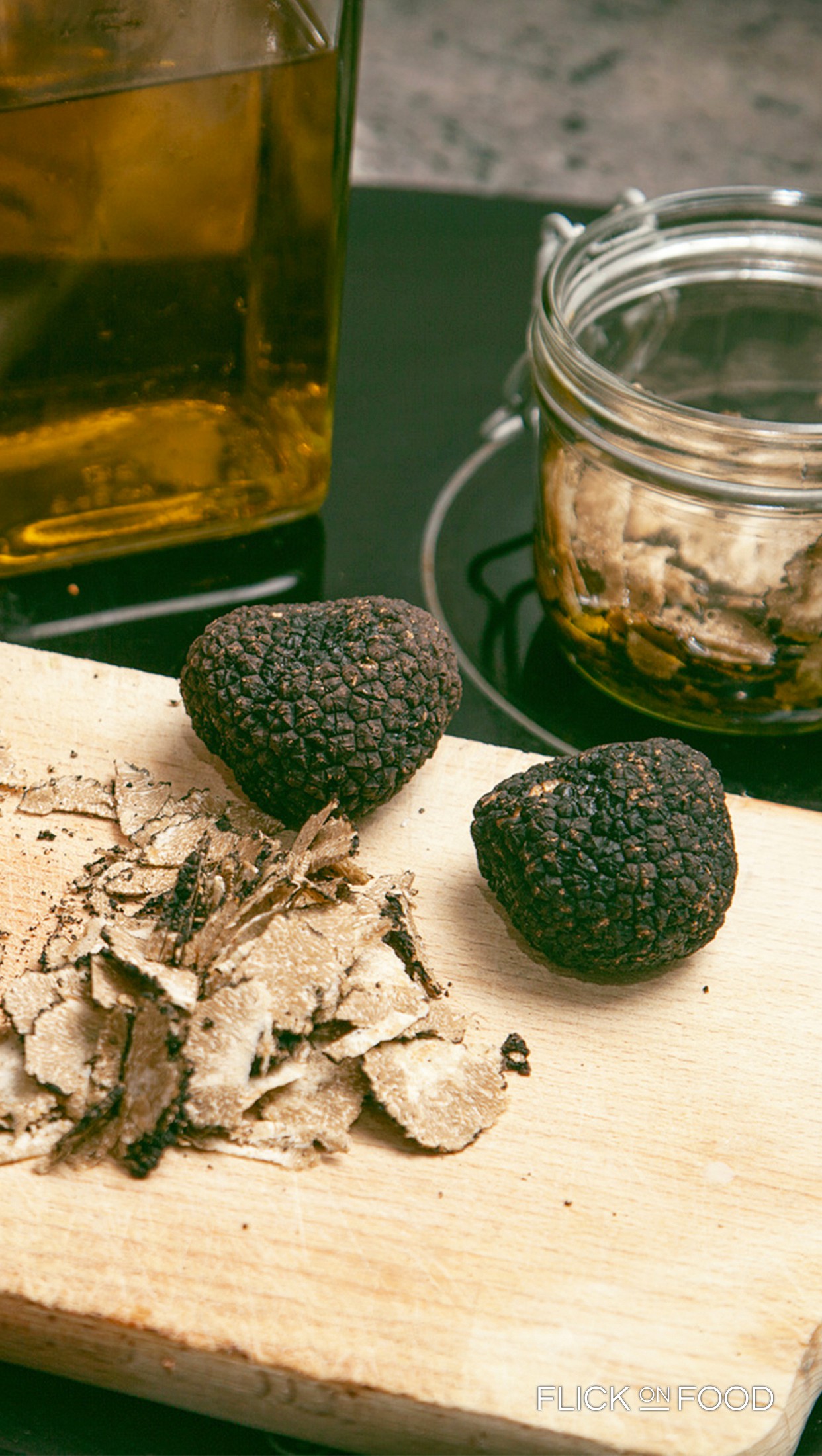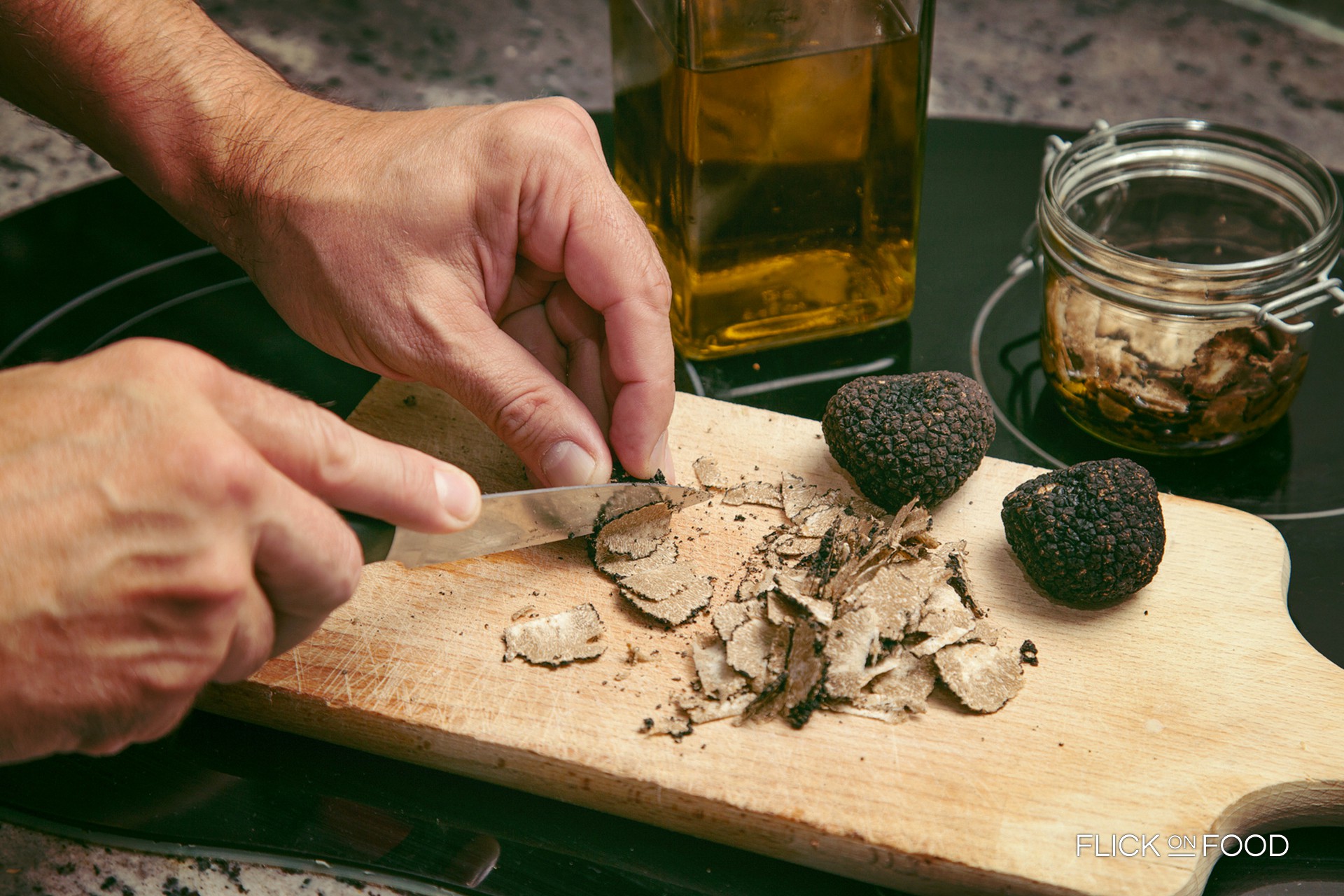
Try shaved black truffles on bruschetta with a drizzle of extra virgin olive oil!
Origin
Black truffles, already well known in ancient Greece and Rome, played a starring role in the infamous legend recounted by the Roman poet Giovenale. He wrote that this tuber originated when Zeus threw a lightning bolt near an oak tree–a plant that was sacred to him. This myth is what gave rise to the black truffle’s image as an aphrodisiac, given the sexual exploits of the the King of Olympus. Ancient people actually considered truffles ‘the food of the gods’ and many Roman recipes recommended cooking them under ashes and eating them with honey. Widespread throughout the central Apennines, in Piedmont and Veneto, they can only be grown in specific wooded areas with certain species of trees. Norcia truffles are distinguished from all the other species by their smooth, round shape and dark colour. The harvest goes from the 1st of December until the 15th of March.
Cookit
Truffles are often called a ‘meaty vegetable’ for their excellent nutritional value and high protein content. But their real strength is their aroma: bold, intense and even a bit fruity, evoking the scents of the woods and the trees. The Norcia truffle is perfect whether eaten raw or cooked. Don’t remove the dirt until you’re ready to cook with them so as to discourage the growth of microbes. You also shouldn’t wash them with water – just clean them with a brush. Strangozzi pasta with truffles (common to the city of Spoleto) is one recipe that stands out among the traditional cuisine Umbria.
Did you know
The Black truffle of Norcia is the most highly prized type after the white truffle. For many scholars, its aroma represented a sort of ‘5th essence’ that could invoke a state of ecstasy for the nose and the palate. They also boast many health benefits: they’re rich in antioxidants, brighten skin, help with acne and skin discoloration, and act as an anti-aging product. You can keep them in the fridge for a limited time by wrapping them in a damp cloth and placing them in a glass jar at 3-6° C.



